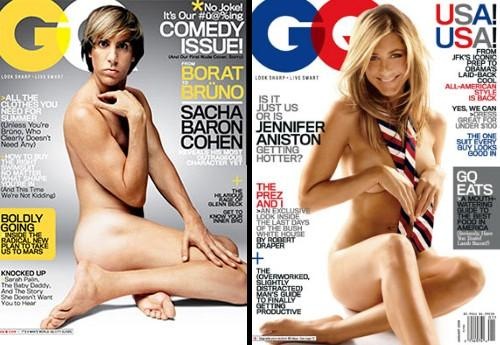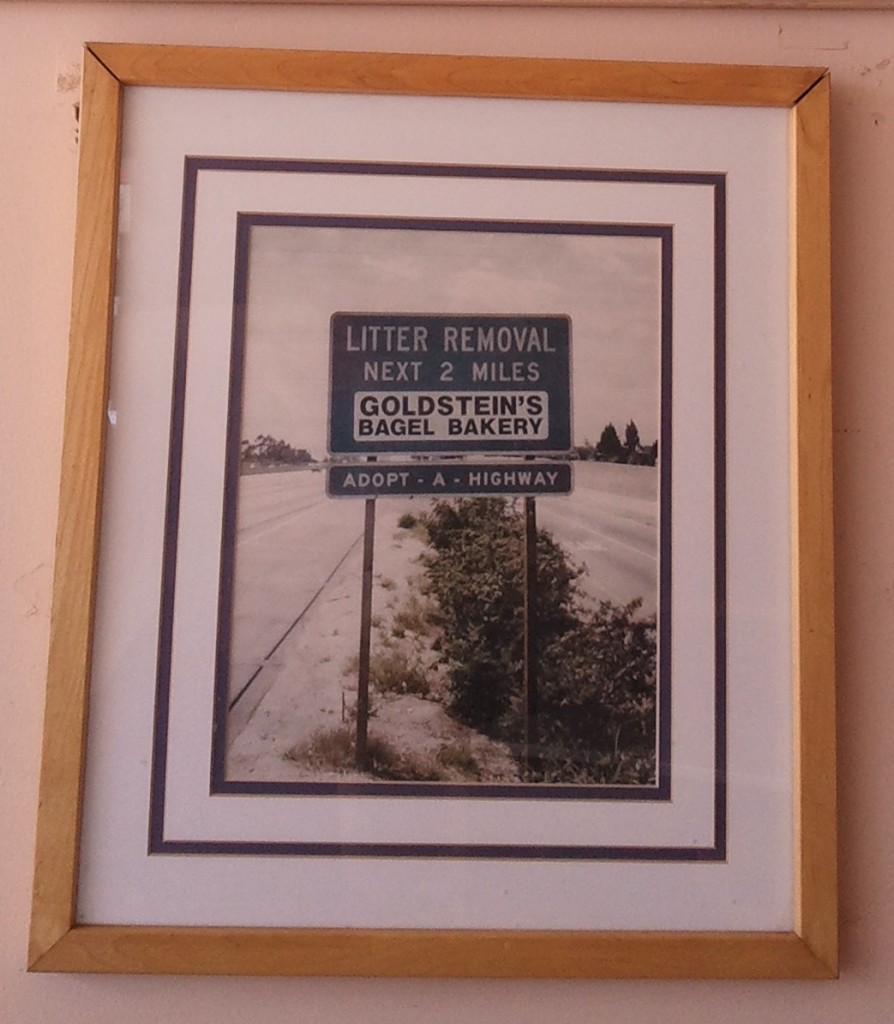A new submission is a nice addition to this old post. The newest iteration of this gender-bending game — men in pin-up poses — can be found in the middle of this collection.
Dmitriy T.M. sent in this month’s cover of GQ featuring Sasha Baron Cohen, in Bruno character. Cohen adopts a pose often used to showcase women’s bodies. The contrast between the meaning of the pose (sexy and feminine) with the fact that he’s male draws attention to how powerfully gendered the pose is. His facial expression highlights the ridiculousness of such a powerful gender binary (women look sexy when they pose like this, men look stupid when they do).
Consider:

Commenter MB noted that GQ has some news stands have decided to cover the cover (as if it were porn):

The interesting question might be: When we pose women like men, does it look ridiculous or badass? And, if it looks badass, what does that say about the way we expect women to look and move?
For a similar project, see Yolanda Dominquez’s photos of “regular” women in “fashion” poses.
Lisa Wade, PhD is an Associate Professor at Tulane University. She is the author of American Hookup, a book about college sexual culture; a textbook about gender; and a forthcoming introductory text: Terrible Magnificent Sociology. You can follow her on Twitter and Instagram.









